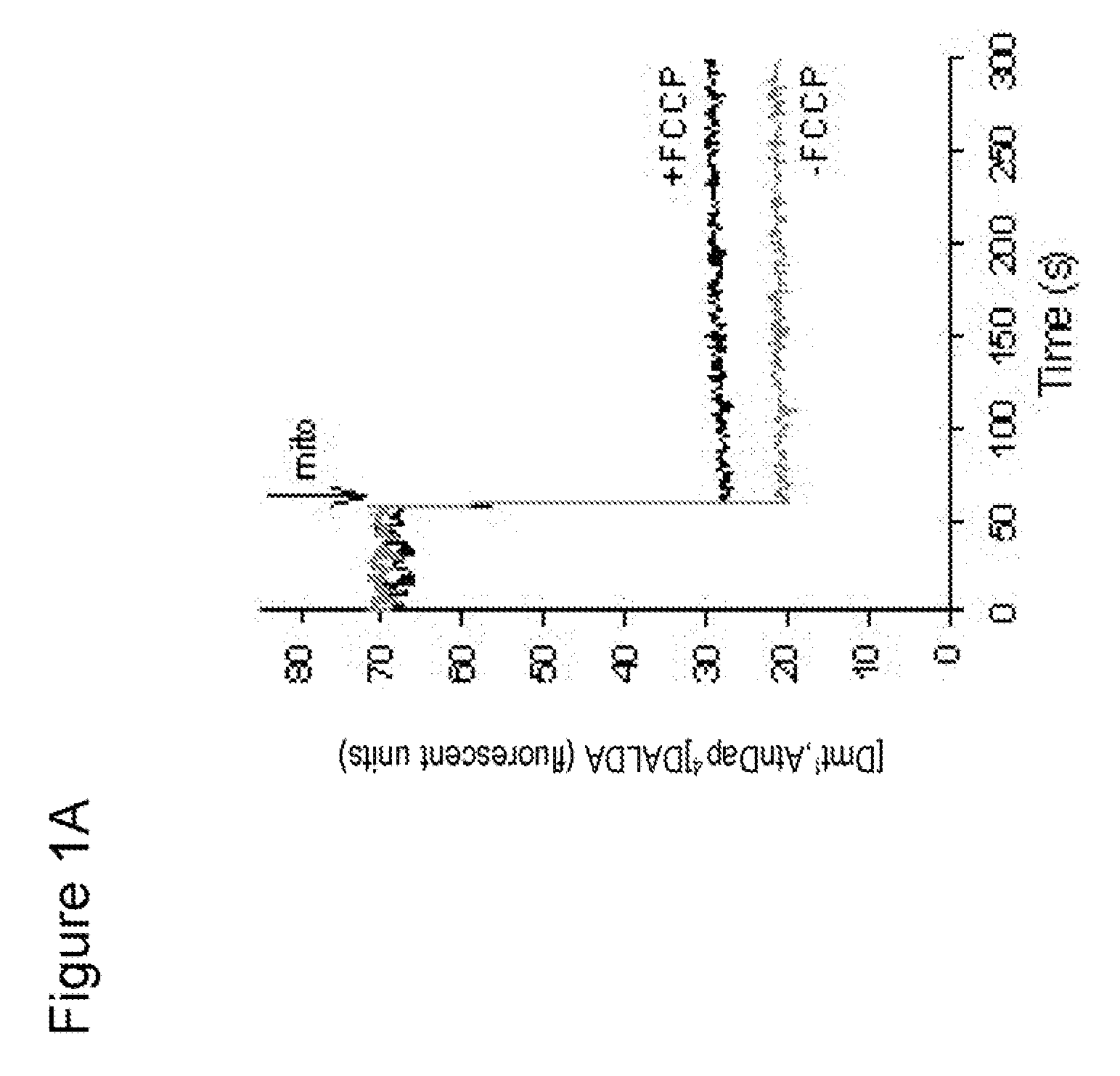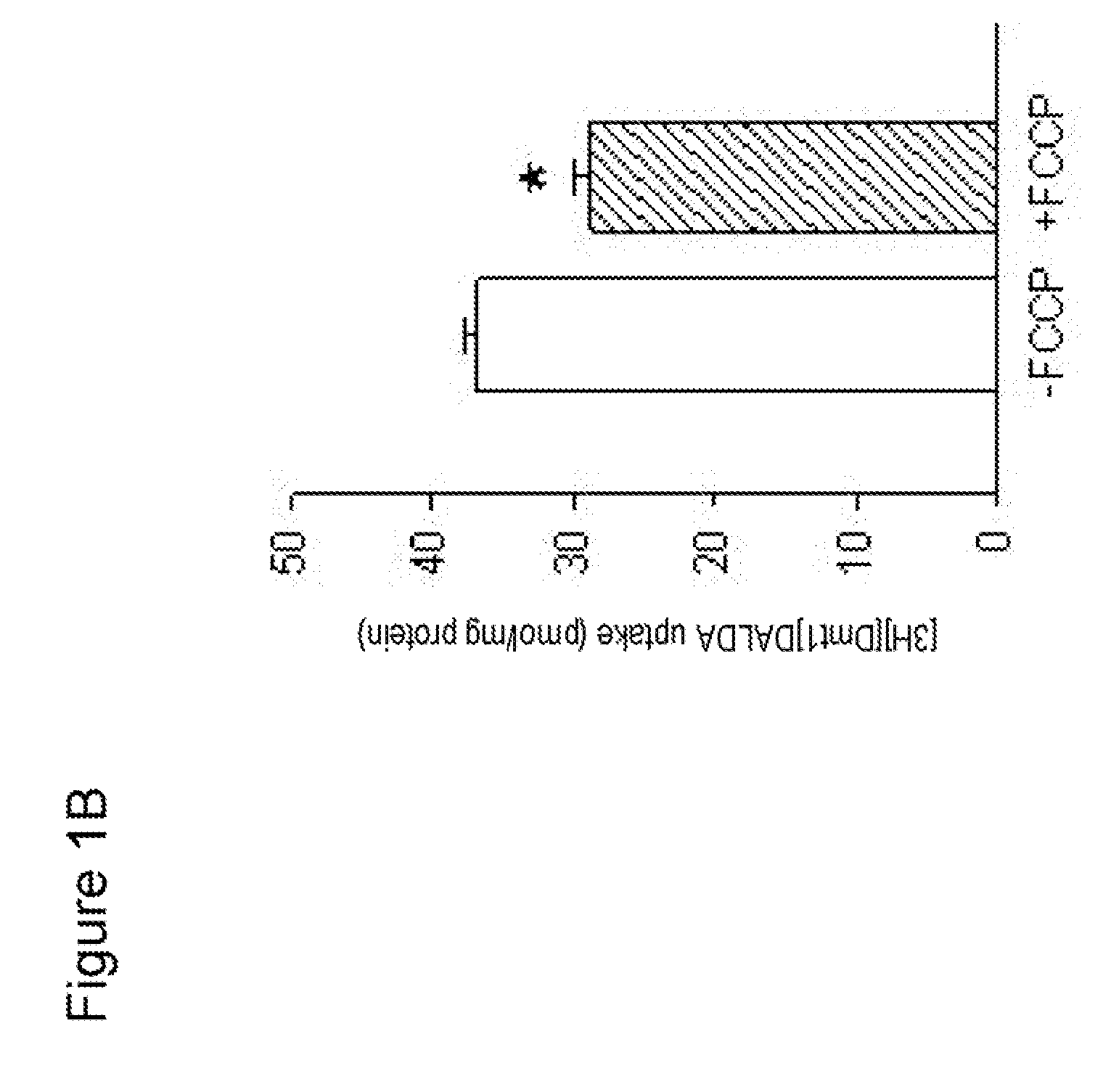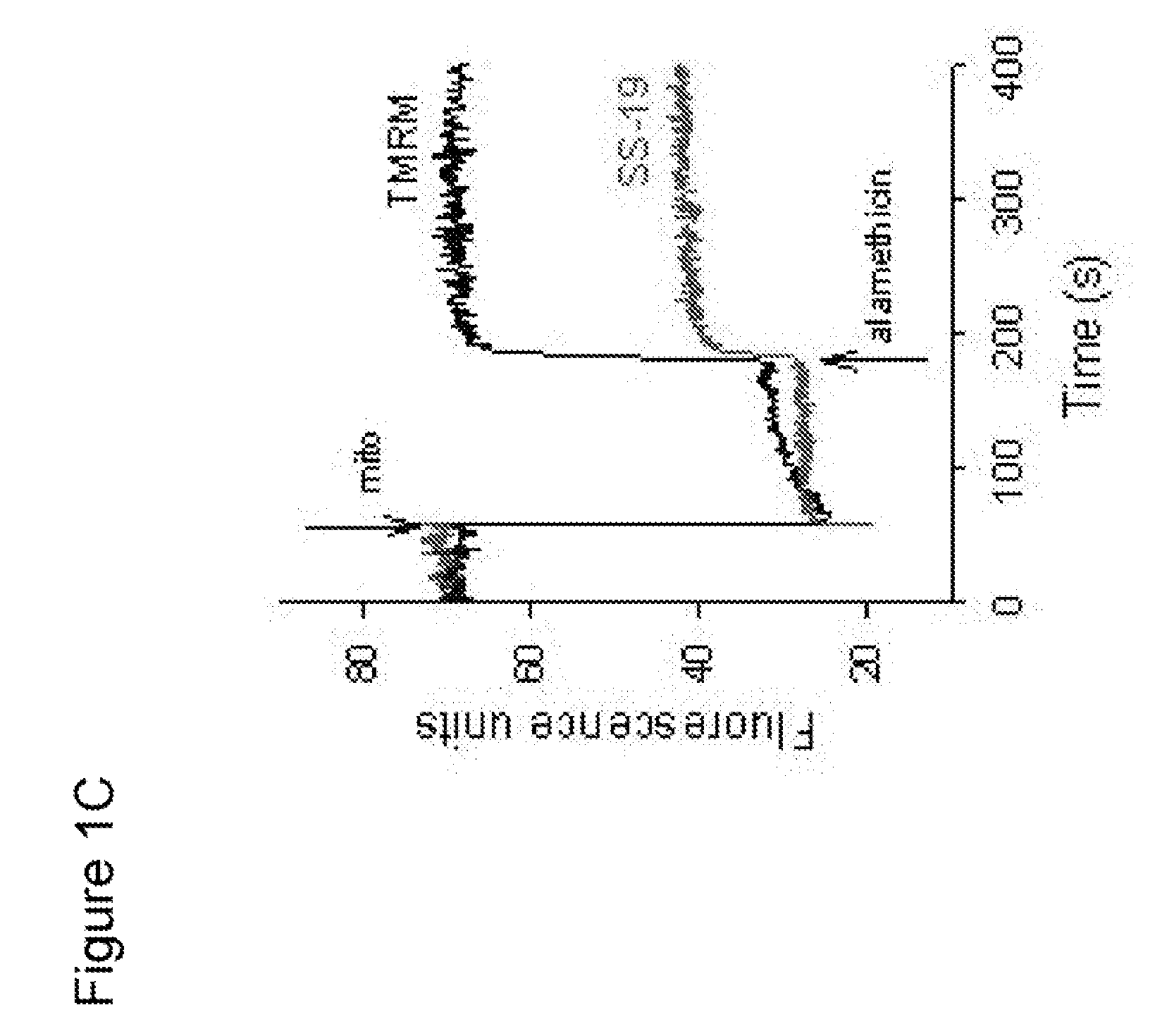Methods for preventing mitochondrial permeability transition
a technology of mitochondrial permeability and permeability, applied in the direction of antinoxious agents, peptide/protein ingredients, metabolic disorders, etc., can solve the problems of cell death, mitochondrial dysfunction, and cyclosporin a, which is less than optimal as a treatment drug against necrotic and apoptotic cell death, so as to prevent mitochondrial permeability transition and reduce the number of mitochondria
- Summary
- Abstract
- Description
- Claims
- Application Information
AI Technical Summary
Benefits of technology
Problems solved by technology
Method used
Image
Examples
example 1
[Dmt1]DALDA Penetrates Cell Membrane
[0129] The cellular uptake of [3H][Dmt1]DALDA was studied using a human intestinal epithelial cell line (Caco-2), and confirmed with SH-SY5Y (human neuroblastoma cell), HEK293 (human embryonic kidney cell) and CRFK cells (kidney epithelial cell). Monolayers of cells were grown on 12-well plates (5×105 cells / well) coated with collagen for 3 days. On day 4, cells were washed twice with pre-warned HBSS, and then incubated with 0.2 ml of HBSS containing either 250 nM [3H][Dmt1]DALDA at 37° C. or 4° C. for various times up to 1 h.
[0130] [3H][Dmt1]DALDA was observed in cell lysate as early as 5 min, and steady state levels were achieved by 30 min. The total amount of [3H][Dmt1]DALDA recovered in the cell lysate after 1 h incubation represented about 1% of the total drug. The uptake of [3H][Dmt1]DALDA was slower at 4° C. compared to 37° C., but reached 76.5% by 45 min and 86.3% by 1 h. The internalization of [3H][Dmt1]DALDA was not limited to Caco-2 ce...
example 2
Targeting of [Dmt1]DALDA to Mitochondria
[0134] To examine the subcellular distribution of [Dmt1]DALDA, the fluorescent analog, [Dmt1,AtnDap4]DALDA (Dmt-D-Arg-Phe-atnDap-NH2; where atn=β-anthraniloyl-1-α,β-diamino-propionic acid), was prepared. The analog contained β-anthraniloyl-1-α,β-diaminopropionic acid in place of the lysine reside at position 4. The cells were grown as described in Example 1 and were plated on (35 mm) glass bottom dishes (MatTek Corp., Ashland, Mass.) for 2 days. The medium was then removed and cells were incubated with 1 ml of HBSS containing 0.1 μM of [Dmt1,AtnDap4]DALDA at 37° C. for 15 min to 1 h.
[0135] Cells were also incubated with tetramethylrhodamine methyl ester (TMRM, 25 nM), a dye for staining mitochondria, for 15 min at 37° C. Cells were then washed three times with ice-cold HBSS and covered with 200 μl of PBS, and microscopy was performed within 10 min at room temperature using a Nikon confocal laser scanning microscope with a C-Apochromat 63× / 1....
example 3
Uptake of [Dmt1]DALDA into Mitochondria
[0138] To isolate mitochondria from mouse liver, mice were sacrificed by decapitation. The liver was removed and rapidly placed into chilled liver homogenization medium. The liver was finely minced using scissors and then homogenized by hand using a glass homogenizer.
[0139] The homogenate was centrifuged for 10 min at 1000×g at 4° C. The supernatant was aspirated and transferred to polycarbonate tubes and centrifuged again for 10 min at 3000×g, 4° C. The resulting supernatant was removed, and the fatty lipids on the side-wall of the tube were carefully wiped off.
[0140] The pellet was resuspended in liver homogenate medium and the homogenization repeated twice. The final purified mitochondrial pellet was resuspended in medium. Protein concentration in the mitochondrial preparation was determined by the Bradford procedure.
[0141] Approximately 1.5 mg mitochondria in 400 μl buffer was incubated with [3H][Dmt1]DALDA for 5-30 min at 37° C. The mi...
PUM
| Property | Measurement | Unit |
|---|---|---|
| Bond length | aaaaa | aaaaa |
| Bond length | aaaaa | aaaaa |
| Chemical shift | aaaaa | aaaaa |
Abstract
Description
Claims
Application Information
 Login to View More
Login to View More - R&D
- Intellectual Property
- Life Sciences
- Materials
- Tech Scout
- Unparalleled Data Quality
- Higher Quality Content
- 60% Fewer Hallucinations
Browse by: Latest US Patents, China's latest patents, Technical Efficacy Thesaurus, Application Domain, Technology Topic, Popular Technical Reports.
© 2025 PatSnap. All rights reserved.Legal|Privacy policy|Modern Slavery Act Transparency Statement|Sitemap|About US| Contact US: help@patsnap.com



